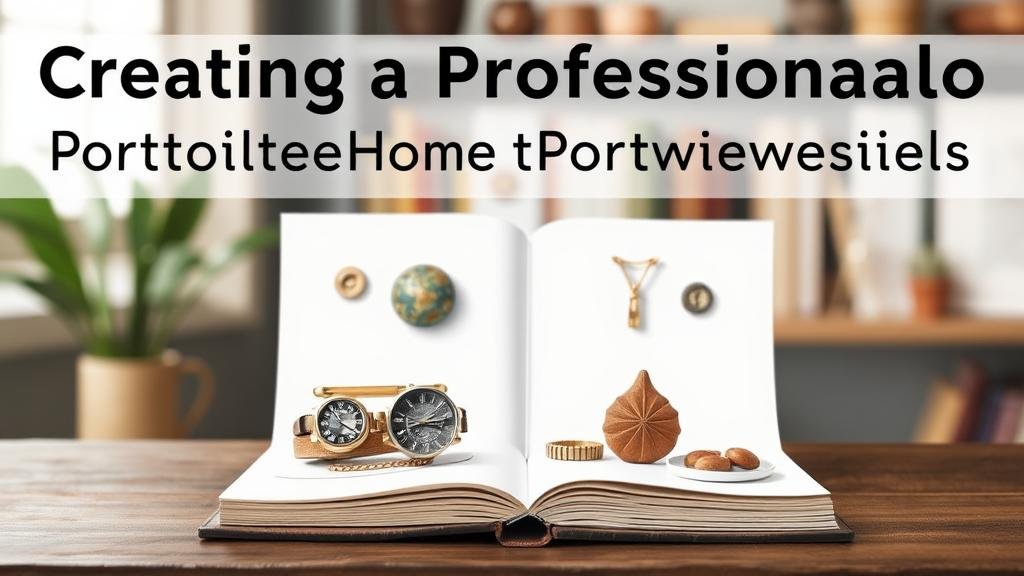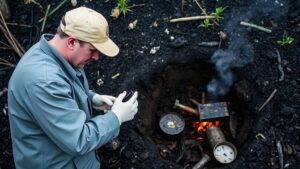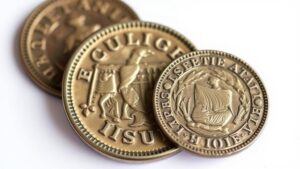Creating a Professional Portfolio to Showcase Your Treasure Finds
Creating a Professional Portfolio to Showcase Your Treasure Finds
In the realm of collecting and showcasing treasure finds, having a well-curated professional portfolio can significantly enhance the appreciation and value of your collection. This article provides a comprehensive guide on how to create an effective portfolio that showcases your treasure finds, highlights your expertise, and engages your audience–whether they are potential buyers, enthusiasts, or fellow collectors.
Understanding the Importance of a Professional Portfolio
A professional portfolio serves as a tangible representation of your skills, experiences, and the treasures you have collected. It acts as an introduction to your work and helps articulate your narrative as a collector or appraiser. Just like an artist’s portfolio presents their creations, a treasure find portfolio showcases your discoveries and expertise in the field.
Effective portfolios can:
- Show the authenticity and value of your items.
- Highlight your experiences and qualifications in the collecting domain.
- Serve as a marketing tool for potential sales or exhibitions.
- Establish your credibility among peers and collectors.
Key Components of a Treasure Finds Portfolio
Creating a robust professional portfolio requires careful consideration of both content and presentation. Here are the key components you should include:
1. Title Page
Your portfolio should begin with a captivating title page. This includes your name, a brief tagline that encapsulates your collection style, and an appealing image of your best treasure find. For example, “John Doe: Collector of Rare Historical Artifacts.â€
2. Table of Contents
A well-outlined table of contents allows viewers to navigate through your portfolio effortlessly. It should include sections like Introduction, About Me, Collection Overview, Individual Treasure Descriptions, and Contact Information.
3. Introduction
Write a brief introduction about your passion for treasure hunting and collecting. Include your motivation, background, and what you hope to convey through the portfolio. For example, “My journey began in 2015 when I stumbled upon a remarkable stash of vintage coins that ignited my passion for collecting.â€
4. About Me Section
This section should provide detail about your qualifications, experience, and expertise in the collecting field. You could include:
- Educational background, especially if related to history or archaeology.
- Certifications from relevant organizations, such as the American Society of Appraisers.
- A brief narrative of your most significant finds and any exhibitions or shows you have participated in.
5. Photo Gallery of Treasures
Visual documentation of your finds is pivotal. Include high-quality images of each item, accompanied by detailed descriptions. Each entry may contain:
- Name and origin of the treasure.
- Historical significance and age.
- Condition and any restoration work conducted.
- Personal anecdotes or stories related to the find.
For example, a well-documented entry for a 19th-century gold pocket watch might include a narrative about your expedition to find it, highlighting its craftsmanship and the historical importance of the maker.
6. Research and Documentation
Include any relevant research or historical documents pertaining to your treasure finds. This could involve:
- Certificates of authenticity.
- Press articles or publications that discuss your finds or similar items.
- Catalogs from exhibitions where your treasures were displayed.
7. Contact Information
Conclude your portfolio with clear contact information. Consider including a professional email address and links to any personal websites or social media where your work is displayed.
Presentation and Format
The format and presentation of your portfolio are equally important as its content. Here are several strategies to enhance the visual appeal:
- Use a clean, professional design layout that is easy to read.
- Choose a high-quality printing option if presenting a physical version, or leverage online platforms like Behance or Adobe Portfolio for digital displays.
- Use clear and professional labeling for each section and image to ensure consistency.
Real-World Applications
A professional portfolio is not only a tool for individual collectors but can be beneficial in broader contexts. For example, auction houses and galleries often require portfolios to evaluate the provenance and market potential of items being considered for auction or display. Also, a well-structured portfolio can facilitate partnerships with historical societies or educational institutions interested in utilizing your collection for exhibitions.
Actionable Takeaways
Creating a professional portfolio for your treasure finds can set you apart in a competitive field. Here are some actionable steps to consider:
- Begin assembling high-quality images and information about your finds today.
- Design a structured layout that showcases your expertise clearly and effectively.
- Regularly update your portfolio to reflect new acquisitions, research, and changes in your collecting journey.
By using these guidelines, you can create a compelling professional portfolio that showcases your treasure finds, engages your audience, and enhances your credibility within the collecting community.



